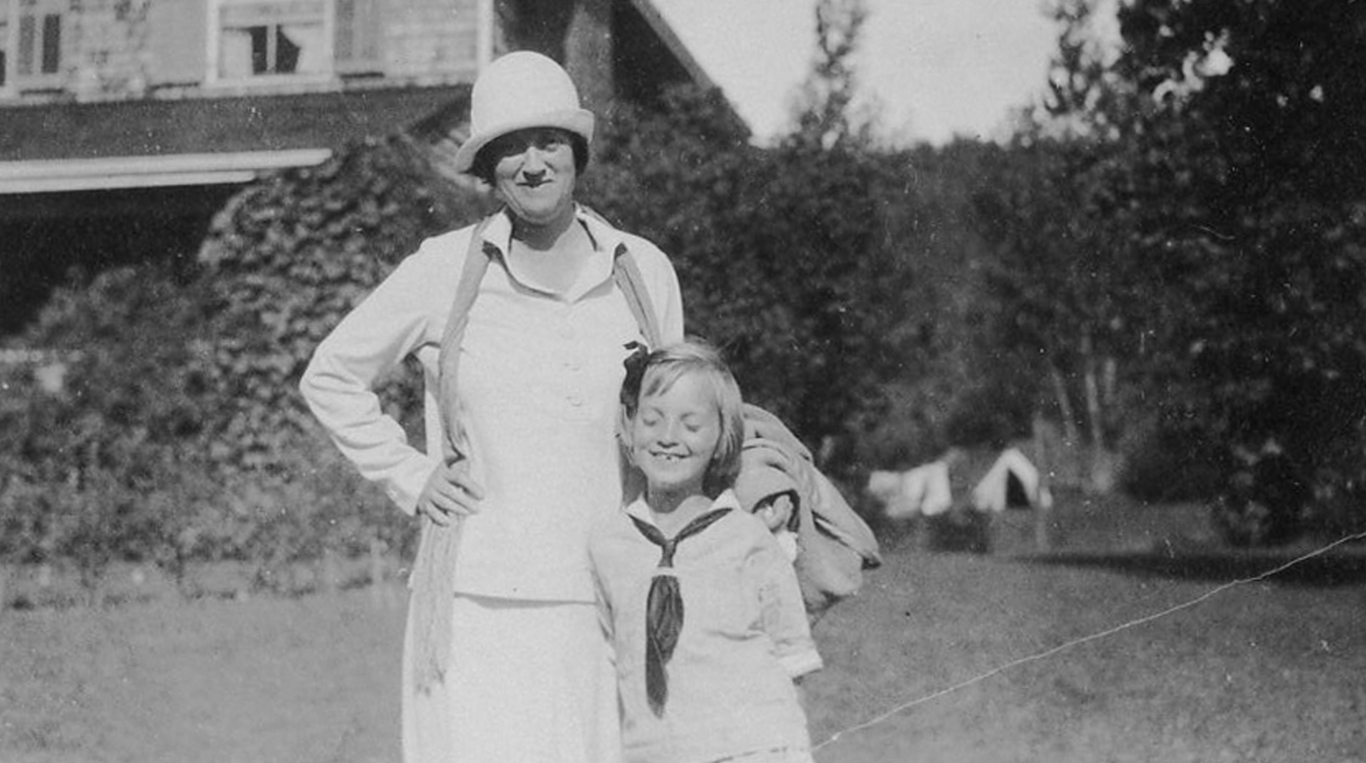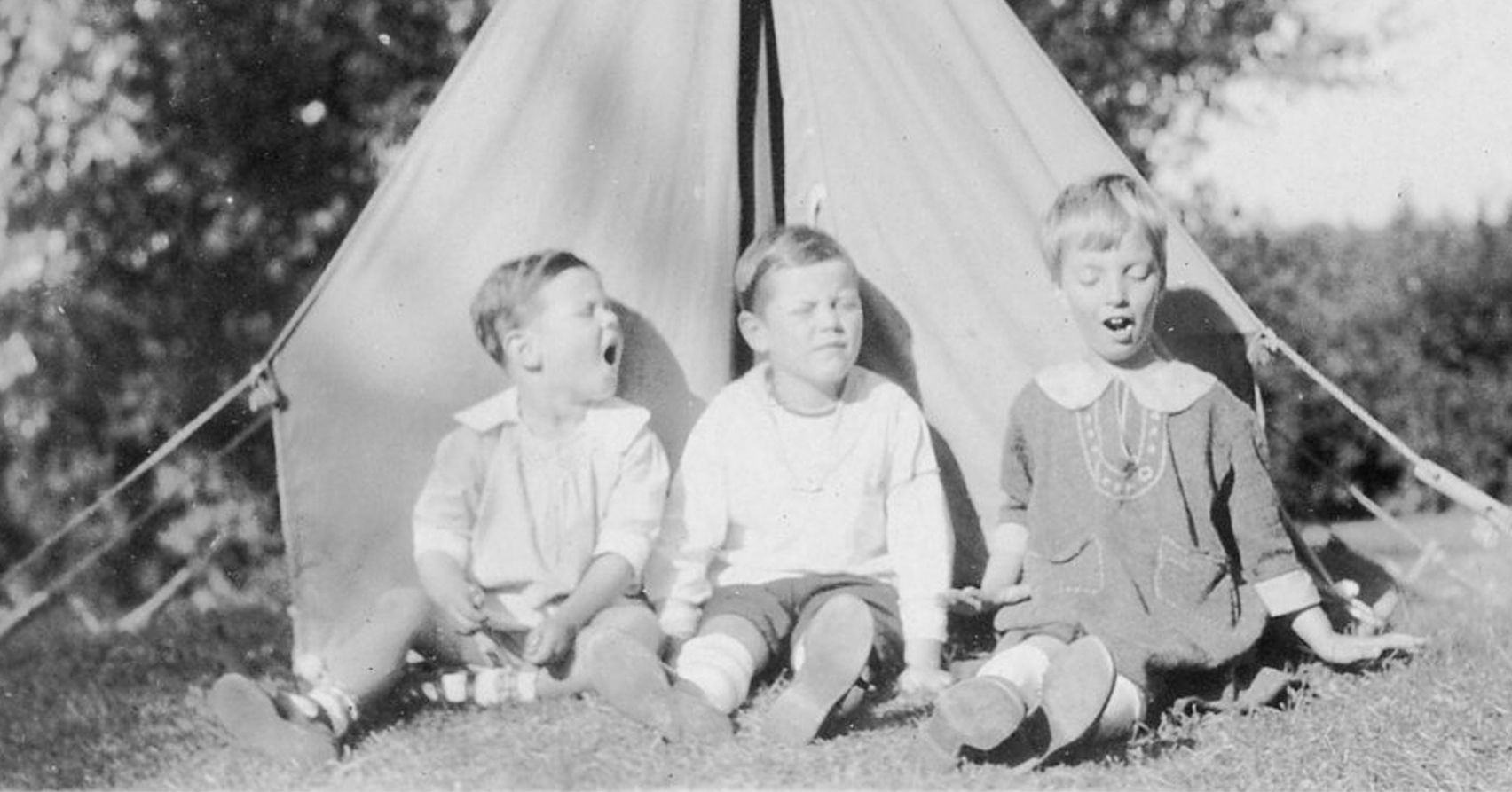
Madeleine, circa 1920
When Charles finally returned to New York in May 1919, he and Mado were thrilled that the war was over, that they were back together, and that they had their much-longed-for child. Charles resumed his work as a journalist, reviewing plays and writing his own plays, novels, and short stories.
Madeleine’s parents loved her, but the pattern of their married life had already been well established over the twelve years they had been together before she was born: dinner at eight, adult conversation, evenings out, and sleeping in. Even as a young child, Madeleine was content eating alone in her room—with her feet on her desk and her plate on her chest—and going to bed before her parents sat down to their more elegant grown-up dinners.
They often went to plays, operas, and symphonies, and they would come and kiss her good night before they left, her father in top hat and tails, smelling comfortingly of Egyptian tobacco, whiskey, and starched linen, and her mother also elegantly dressed and smelling deliciously of expensive perfume.
Her parents still had those casual Sunday-night suppers, and Madeleine would sometimes sneak out of bed and listen from the hallway to the music and the conversation. While some children might have observed and fantasized about being a grown-up someday, Madeleine saw it as fascinating and curious, but not something she wanted for herself. She sensed that childhood was only very short in the scheme of things, and she wanted it to last.

Charles and Madeleine, circa 1919
Her parents, however, disagreed about how to raise her. Mado hadn’t had much formal education, spending her childhood in Florida with lots of cousins and play. She thought childhood should be carefree. Charles had had a much more traditional school experience and therefore wanted a more structured upbringing for his daughter. Charles usually won their disagreements, and he was insistent about sending his daughter to the best schools, whether his daughter liked it or not, and whether he and his wife could afford it or not. (His pocketbook, Mado was fond of saying, “waxed and waned like the moon.”)

Charles, Madeleine, and Mado, circa 1922
Charles was prone to depression and sometimes withdrew from his wife and child. When he emerged from his darkness and turned his attention once more toward his daughter, it was as if the sun were shining on her again. His moodiness did not stop Madeleine from adoring her father, and being a little bit in awe of him. He was a force in the world: charismatic, confident, and charming. She watched him writing, absorbed in his creation of stories—real and fictional—and saw that it gave him both pleasure and frustration. He wrote a first draft in longhand and then typed it out on a typewriter. As a war correspondent, he typed his dispatches directly.When Madeleine was ten, he gave her his old typewriter, which she used into the 1950s.

Charles’s typewriter, given to Madeleine at age ten

Madeleine and Caroline “Dearma” Barnett, circa 1922
One of the ways her father shared his love of stories with his daughter was through opera. The first time he took her was when she was around eight. It was a production of Madame Butterfly. Madeleine had no idea what to expect, but she was immediately drawn into the story and the music. It started like a beautiful fairy tale, a love story between a naval officer and a young Japanese woman. But when tragedy befell Cio-Cio-San at the end, Madeleine was deeply shocked and upset. She didn’t want to disappoint her father, so when he asked if she had enjoyed the opera, she said that she had, and he had no idea that she was traumatized by the sad ending. The next time he took her to see an opera—Pagliacci—she asked him as they sat down if this story had an unhappy ending, too. When he told her it did, she began to cry and did not stop until her father took her home, before the curtain even rose.

Mado and Madeleine, circa 1924
Madeleine spent more time with her mother, who was often home practicing the piano for hours at a time or writing daily letters to the family and friends she had left behind in Jacksonville. The two would visit Jacksonville several times a year, traveling on the overnight train. They stayed with Madeleine’s grandmother Caroline Barnett, whom Madeleine called “Dearma.” There were lots of cousins there, too.
Like Charles, Mado was a wonderful storyteller. Many of the stories she told Madeleine were about Mado’s grandmother, the first Madeleine L’Engle, who had had not only a glamorous adolescence in Spain in the 1840s as the daughter of the U.S. ambassador, but also adventurous early days of marriage to an army doctor traveling throughout America’s western territories and across the Isthmus of Panama before there was a canal. Then, widowed early during the Civil War, Mado’s grandmother had worked as a nurse at an army hospital and eventually settled in Jacksonville. Mado would also recount stories that her father, Bion Barnett, had told her about his wild childhood in Kansas. He would tell his children the stories after dinner, while he smoked a cigar, and Mado always kept an eye on his lengthening ash, knowing that when it fell, the stories were over for the evening.

Madeleine with unknown boys, circa 1923
Madeleine and her parents traveled by ship to Europe several times when she was young, visiting Grandfather Bion, that cigar-smoking storyteller, and his common-law wife, Louise, whom Madeleine and her cousins called “Gaga.” Grandfather Bion was a wealthy banker who lived in various places in France and Monte Carlo. Later Madeleine would recall idyllic wanderings around the French countryside, provisioned with bitter chocolate, sweet butter, and sour bread, which she said taught her how to mix flavors and textures in both her cooking and her writing.
Aside from her parents, the adult who meant the most to her was Mrs. O’Connell. Mary O’Connell—whom Madeleine called Mrs. O—came several times a week to the Camps’ New York apartment to help Mado with the cooking and cleaning, and she took a special shine to the young Madeleine. And Madeleine adored her. Next to her strict and formal parents, Mrs. O was a breath of freedom and a glimpse into a wider world. Mrs. O, who thought Madeleine was overprotected, would often bend the rules.
For example, Madeleine was confined to her Upper East Side neighborhood, but Mrs. O took her on the subway to other parts of the city—on adventures to Greenwich Village and even to the Bronx, where Mrs. O lived. A devout Roman Catholic, Mrs. O would sometimes take Madeleine to church to attend Mass or to light a candle for someone in pain or trouble. But Madeleine and Mrs. O agreed to keep these outings a secret because they knew her parents would not have approved.
Madeleine also loved exploring her Upper East Side neighborhood with her parents or Mrs. O—the tree-lined streets; the tall, elegant buildings; and especially the Metropolitan Museum of Art. She visited its galleries whenever she could, enthralled by the creativity and history on display. Her girlhood memories of New York City remained strong throughout her life, and she always thought of it as her home.

Madeleine, circa 1924